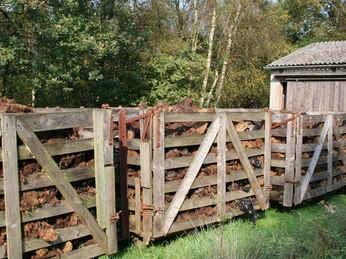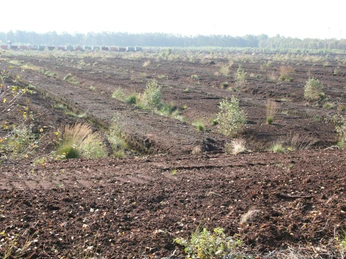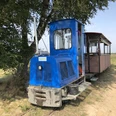The "Große Borsteler Moor" has been used for centuries by the inhabitants of the surrounding villages and farmsteads from the edge of the moor for the extraction of litter and fuel peat as well as logging. Peat was extracted until after the 2nd World War. The "peat pits" are still preserved today in the fringes of the moor.
The areas that were completely peat-cut by hand were cultivated and used for agriculture. Initially, the remaining areas of the "Steyerberger Fichten" owned by the state were peat-covered and reforested. In the meantime, however, rewetting and other renaturation measures have been developed and initiated with the relevant nature conservation authorities.
The areas that were completely peat-cut by hand were cultivated and used for agriculture. Initially, the remaining areas of the "Steyerberger Fichten" owned by the state were peat-covered and reforested. In the meantime, however, rewetting and other renaturation measures have been developed and initiated with the relevant nature conservation authorities.
Good to know
Author
Mittelweser-Touristik GmbH
Lange Straße 18
31582 Nienburg/Weser
Organization
Mittelweser-Touristik GmbH
License (master data)
Mittelweser-Touristik GmbH
Nearby






